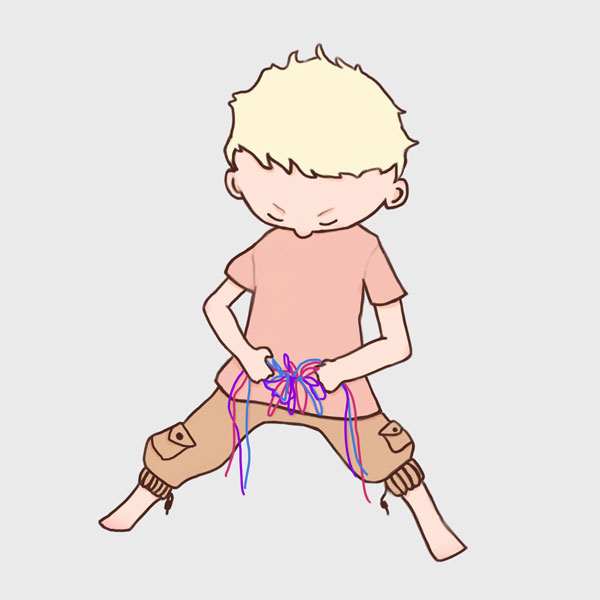The question of what principles might underlie this forgetfulness was the focus of a recent paper published in eLife by HFSP Program Grant awardees Peyman Golshani, Máté Lengyel and Gergő Orbán.
Representational untangling - the idea that cortical representations are built in a way that the resulting code can be easily read by downstream areas - has previously found support in the inferotemporal cortex, a high-level visual area where neurons are sensitive to complex features, such as objects. Whether representational untangling is present at earlier stages of visual processing and what computations might support it has remained elusive.

An artist’s conceptualization to illustrate that the untangling of representations starts early (as early as in the primary vconisual cortex). Artist: Liló Orbán
First author Merse Gáspár and his colleagues pointed out that in the visual cortex variations in elementary features like the phase of a periodic grating stimulus or its wavelength hopelessly ‘entangle’ membrane potential responses of orientation selective simple cells, such that simple (linear) decoding of orientation is rendered impossible. In the study the authors argue that a fundamental component of neural response generation, the firing threshold, saves linear readability of simple cell responses. Interestingly, the firing threshold can delicately balance information loss by clipping subthreshold parts of the responses and boosting sparseness, a network feature helping linear readability, to achieve an untangled representation for visual stimulus orientation. This balance between information loss and sparseness defines a limited window for the firing threshold where disentangling is most effective. By analyzing intracellular recordings of mouse V1 neurons we show that the firing threshold for efficient representational untangling coincides with the firing threshold of simple cells. In summary, the study demonstrates that information re-formatting, rather than maximisation, may already be a relevant computational goal in the early visual system.


































